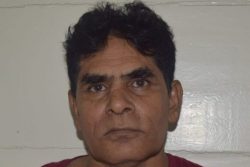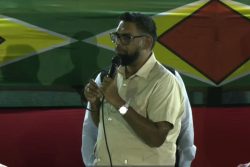Former PPP stalwart Ralph Ramkarran says that the most important general election in the country’s history since 1992 could spell defeat for the ruling PPP if APNU and the AFC were to agree to an electoral alliance.
In his column in yesterday’s Sunday Stabroek he however cautioned that the opposition will also have a difficult task of balancing the possibilities. He asserted that if there is no electoral alliance between A Partnership for National Unity (APNU) and the Alliance For Change there is a real possibility that a coalition government can emerge if the PPP/C secures plurality and therefore the presidency.
Ramkarran, who quit the party two years ago after a row over its weak stance on corruption, adverted to the declining electoral fortunes of the incumbent since 1992.
“These are the most important elections since 1992 when the then PNC government was voted out of office in the first free and fair elections since 1964. The 1992 elections, as we know, were won by the PPP/C. It has won the majority in three successive elections thereafter but only the plurality, forty eight per cent, in the elections held in 2011. The results of the 2011 elections exposed the PPP’s weaknesses after nineteen years in office and it has struggled since then with a minority government, which has had no achievements of substance to its credit”, Ramkarran said.
Noting the nature of the PPP/C’s minority government, Ramkarran said its agenda was to undertake short-term projects which would bring direct benefits to the electorate so that when elections inevitably rolled around it could point to solid achievements.
“The Marriott, a great project, Amaila, the airport, the specialty hospital, all necessary projects, do not actually benefit sugar workers, small miners, single parents or working families in a direct way. They do not enhance communities where voters are located. True, there have been some of these initiatives, like the $10,000 grant and others, but not enough”, he asserted.
Ramkarran, a two-term Speaker of the National Assembly said that by failing to concentrate its full energies on vote-getting projects, the government lost the opportunity to maximize its influence with the electorate.
“Instead, the image it is going to the electorate with is of a government under siege and at perpetual war with the opposition. The PPP’s history created the belief that it was at its best as an underdog. But times have long changed and the leadership is yet to realize it. The electorate in Guyana, like everywhere else, wants progress, not excuses. When the government complains about the opposition during the campaign, the question should be asked as to why was there not a coalition government”, Ramkarran stated.
He said that while a party in office for 22 years will have accomplishments to boast about the electorate will be concerned more with what is happening now.
“The economy is slowing down because of the reduced price of gold. The sugar industry and the conditions of sugar workers remain the same. The EU resources of €34 million will not be available to spend during this crucial period. Flooding has affected several communities and continues to create inconvenience and severe losses. There are some positive signs such as greater production in the rice industry and the reducing price for oil. But since… there has not been any measurable impact on the lives of its own supporters, it cannot be said with confidence that PPP/C’s supporters are energized, although the PPP might contest this conclusion”, Ramkarran contended.
He added that there is some reason to believe that many PPP/C supporters who did not vote in 2011 or who did so for the AFC might return to the fold this time.
“Some are remorseful and others have bought in to the propaganda that the PNCR will return Guyana to the days of the past of rigged elections and banning of foodstuff. On the other side of the coin, the PPP will have to contend with the fact that demographic shifts are not in its favour, apathy has increased from 2011 even among its own supporters and that it has made little or no impact on the youth vote which is sizeable and growing. The Amerindian vote might be fraying at the edges, with all that slapping up that has been going on”, the latter statement a reference to an alleged assault of an Aishalton teacher by a presidential guard after President Donald Ramotar was heckled at a public meeting in the community.
“The most important development, however, is the potential of the PPP/C facing a united opposition. Both opposition parties have spoken positively of the possibility of an electoral alliance.
“While the worst the PPP/C can do with the opposition parties going to the electorate separately is to win a plurality, with a united opposition it faces the possibility of total defeat and the loss of political office. For the first time since 1992, the PPP is faced with its own electoral mortality”, he posited.
Ramkarran, who was a member of the PPP for nearly 50 years prior to quitting said that the opposition would obviously be aware that ethnic voting patterns and ethnic insecurities would be at play and would be exploited if there is an electoral alliance and a combined list.
“Both the PPP/C and the opposition would know that with only two substantial groups facing the electorate, there will be one loser and one winner. There will be all out electoral war, with no prisoners taken”, he cautioned.








